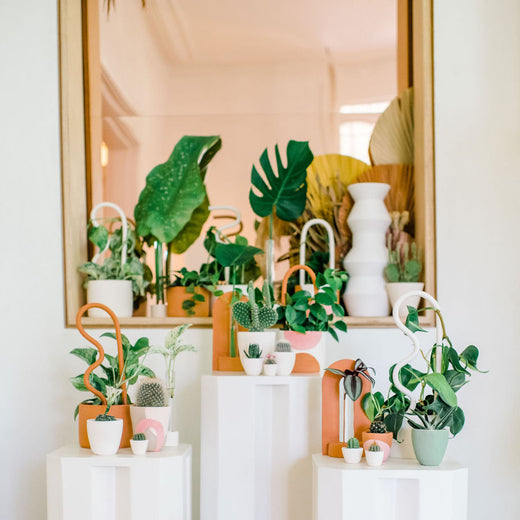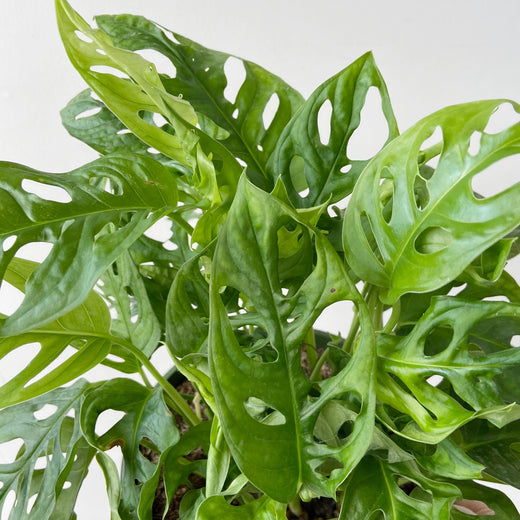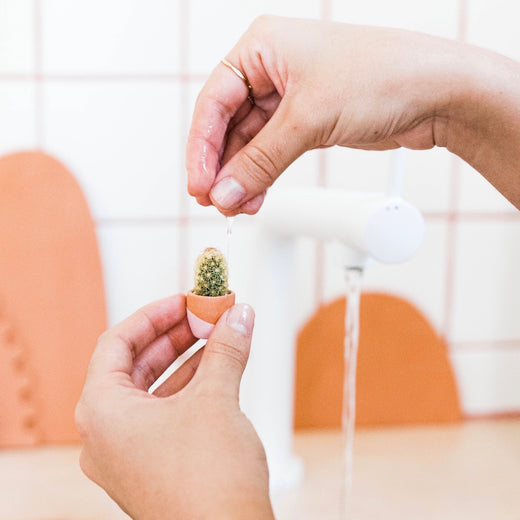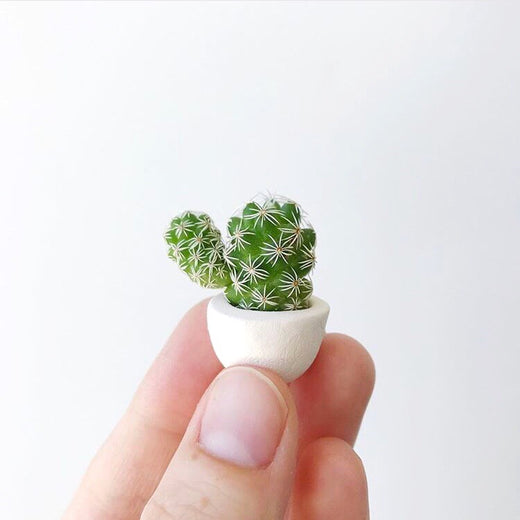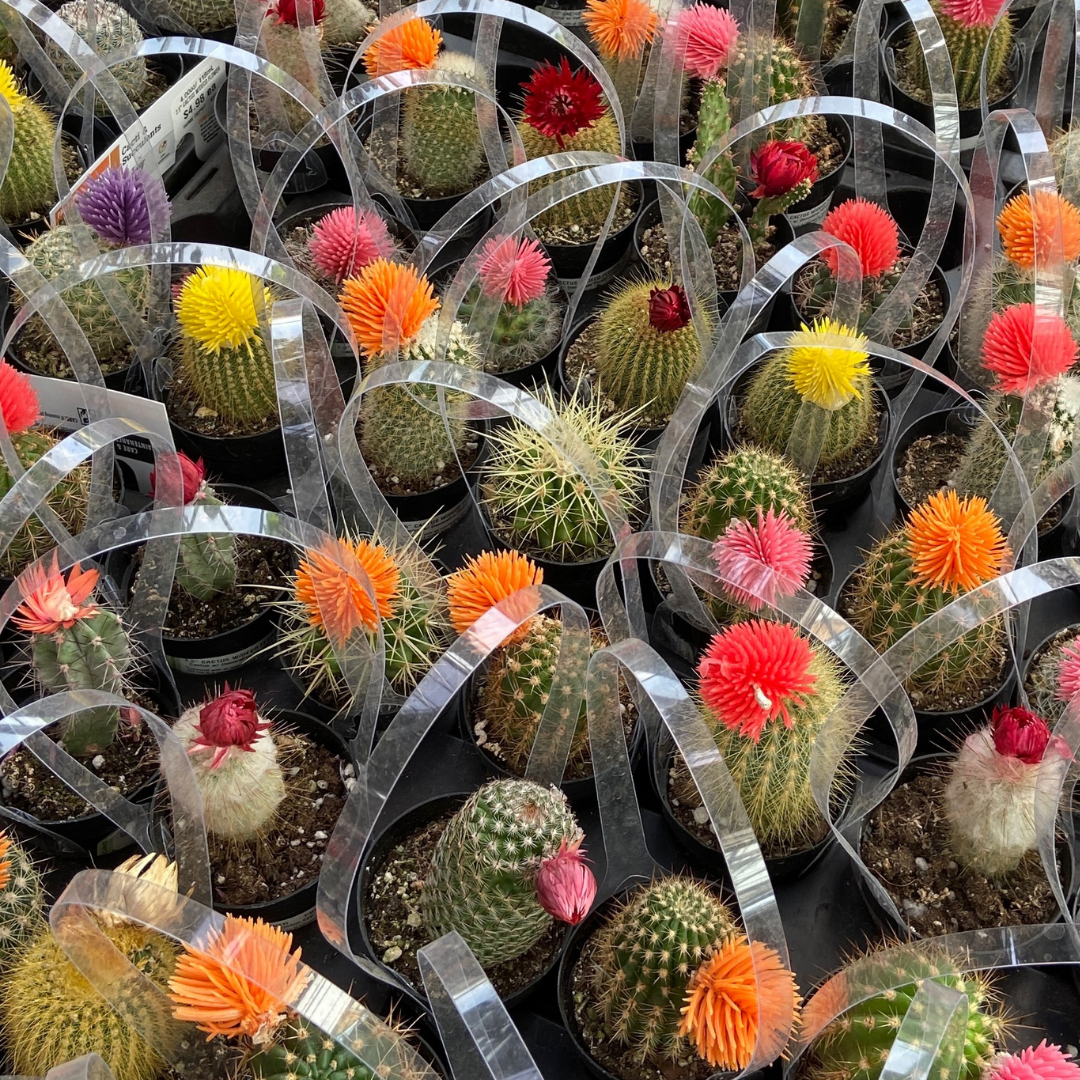How to avoid buying unhealthy cacti and succulents: 5 signs of unhealthy plants
When you’re at a big box store, it can be tempting to try to save one of the struggling cacti or succulents. They look like they would be cute if they were not half dead and had flowers hot glued to the top of them. We know it can be hard seeing them that way. We hear of so many people trying to bring them back and how it didn't work out.
It is actually pretty easy to find beautiful and healthy plants that are easy to keep alive and we can show you how! These are the signs of unhealthy plants so that you can make being a plant parent much less of a struggle.
If you are selecting a plant from the store, avoid buying cacti and succulents that:
1. Do not pass the “soil slide test.” If you lightly pull on the cactus and the soil comes up with it in the shape of the growers cup, it’s time to skip that plant. It’s been in terrible soil for who knows how long and is probably not doing very well. This soil holds water against the roots of the plant and causes rot from the bottom up. The only place we know that passes the slide test are our plants, sometimes small owned plant shops, and IKEA. (If IKEA sold their soil we would use theirs instead of mixing our own.) The only downside to IKEAs plants is that they do grow a lot of delicate and challenging plants, including easy to kill succulents.
What you want: The soil should fall away from the roots of the plant as you slide the plant out of the pot or growers cup. It should be fluffy and sandy rather than compacted and dusty.
Pro-Tip: If you want to test this without making a mess, see if you can wiggle a key into the soil without a lot of pressure. The soil shouldn't crack into pieces.
2. Are soft or squishy. While cacti and succulents do have some natural give to them, they should not be spongy, soft or squishy. This is a sign that the plant has been overwatered or that it is in cheap soil that holds water against the roots for too long causing root rot.
What you want: The cactus or succulent should be firm and not droopy or soft bodied. A thick bodied cactus shouldn't have a lot of give or bend to it.
3. Have strawflowers or plastic flowers hot glued on. Yes, the ones at big box stores in the little black growers cups with the terrible soil and the plastic loops for carrying...have fake flowers hot. glued. on. No living thing needs flowers hot glued to them, especially when they are cacti and succulents that can flower naturally! Removing the hot glue can remove the spines and even the skin of the cactus. Or the flowers may peel off to reveal burns from the hot glue. And no, these are not glued on to show you which color they bloom. They are meant to be permanent, are damaging, and they are intended to sell the plants faster.
What you want: Nothing fake glued on, no plants glued down, no rocks or sand glued in that would trap water. Basically, even though it may seem obvious, make sure there are no signs of glue anywhere at all. This goes for air plants too.
Most cacti are frequent bloomers, especially round or barrel cacti, and should be free of these fake flowers and hot glue damage to produce their own natural blooms!
Look for cacti and succulents that look like they were cared for rather than covered up.
4. Are spray painted. These poor plants...what more is there to say. They won’t be able to breathe well or benefit from the sun’s rays. Paint covering an entire plant is bad news.
What you want: Plants that have a naturally bright and healthy color.
5. Show signs of damage or pest infestation. Either this plant has been damaged in transit or is carrying a pest that can easily be transmitted to your other plants. When so many cacti and succulents are shoved together in the millions it can be very difficult to spot pests. We have seen plants with pests all over them and some with pests only under the soil at the base of the plant - be sure to give plants a good look while you are still in the store.
What you do want: Healthy looking plants free of damage, spots, scrapes and pests. Plants should always be free of blistery skin, white pastiness, and small cobwebs as those are signs of pests. Brown on the cactus or succulent below the soil line can be a normal reaction to being under the soil.
Although it can be tempting to want to save these plants, buying them will only result in more plants being mass grown with all of these issues by people who care about moving them for money rather than about the health of the plant or whether they survive in your home.
So now that you know how to avoid unhealthy plants and what to look for in order to find healthy ones, it will be much easier to set yourself up for success. You can find a great terracotta planter that is not too big or too small, some really rich, sandy cactus and succulent soil, and water once per month.
It is really important to us to set you up to succeed at having plants and we want to show you how easy it can be.
We created our plant kits because we used to struggle to keep plants alive. After figuring out and growing only the hardiest plants, designing and hand making planters that help to replicate the natural environment of each plant, and mixing soil for the plant’s needs, we figured out that most plants are really easy to keep alive if they are set up properly. And we tested all these plants in their setups for at least one year in order to learn how they respond to different indoor environments. If you already have a plant that needs saving we’ve created a Save a Plant Kit just for this situation!
That is why, after knowing exactly how they are set up, we can give them to you with specific instructions to make sure your plant can thrive with little maintenance. And each plant comes with our full care support.
We want you to have success with plants and we know that if we could do it, you can too!
xo, Seana

